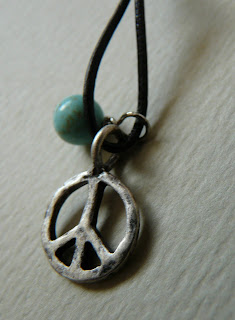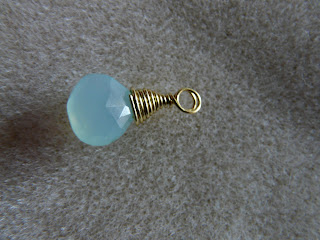Dead soft, half hard, wire gauge, half-round or square, the choices are endless so where do you begin when you're choosing a wire for a project? The truth is all wires are not created equal so here's the run down on what you need to know when choosing wire for a project.
Dead soft, half hard or hard are terms used for more expensive wire like gold-filled or sterling silver and describe how flexible and malleable the wire is. Dead soft can be bent easily and withstands much more work, meaning if you make a mistake you can usually undo it and reuse the wire, half-hard is exactly that, less flexible and unfortunately less forgiving. All wire will snap when it's overworked so when you are a beginner, less expensive wire is always preferred.
Craft and less expensive wires come in different gauges but malleability isn't measured so if you don't want to spend a small fortune and come out with a mangled mess then cheap is in. The bottom line is, if a project calls for dead soft wire you can use any wire that is very flexible. If you need half hard then you can manually harden the wire by hammering it. I use a wire whacker because it keeps the shape of the wire and doesn't flatten it.You can check it out here:
http://www.beadaholique.com/p-10984-wire-whacker-wire-hardening-for-wire-wrapping-whack-it.aspx.
Alternately you can pull a wire through nylon pliers several times to harden it. Usually half-hard wire is preferred if you are making ear wires or scrolls.
Gauge describes the diameter of the wire, the higher the number the smaller the diameter. Gauges can be anywhere from 10, which would be used for a band ring to 32 which is ultra fine and best for wire crochet. The gauges in the middle are more often used by most people. I use 20 to about 26 gauge most often. 20,21 and 22 gauge are all-purpose and great for jump rings, ear wires, wrapped rings and much more. The only downside to this size wire is that they don't always fit through natural gemstone beads, which leads into why I also have, 24 and 26 gauge available for my gemstone bead projects. I've found that any gauge smaller than 26 is just too flimsy for my uses because I don't crochet or bead weave.
Last but not least is wire shape, as well as your standard round wire there is half-round, square, twisted and even triangular. Round is my "go to" wire and what most people use, square or half round is best when working with stones without holes like cabochons and nuggets because it molds to the shape of the stone and is easier to work with. Twisted, is wire that has been twisted for you and is most times half-hard, it's used for decorative techniques. Some people twist their own wire with a pin vise, I prefer to buy the wire already twisted because I'm not an expert at doing it myself.
That concludes wire 101. I know it's not an exhaustive description of everything you'll find out in the beading world but it gives you and idea of what to look for in a wire. One final suggestion, when buying wire for jewelry projects try to avoid wire that has a plastic coating, some colored wires have this type of coating. I don't recommend this type of wire because most times the coating gets damaged and little frayed bits of plastic make the project look terrible.
So good luck and until we meet again happy wire-working.D





















































